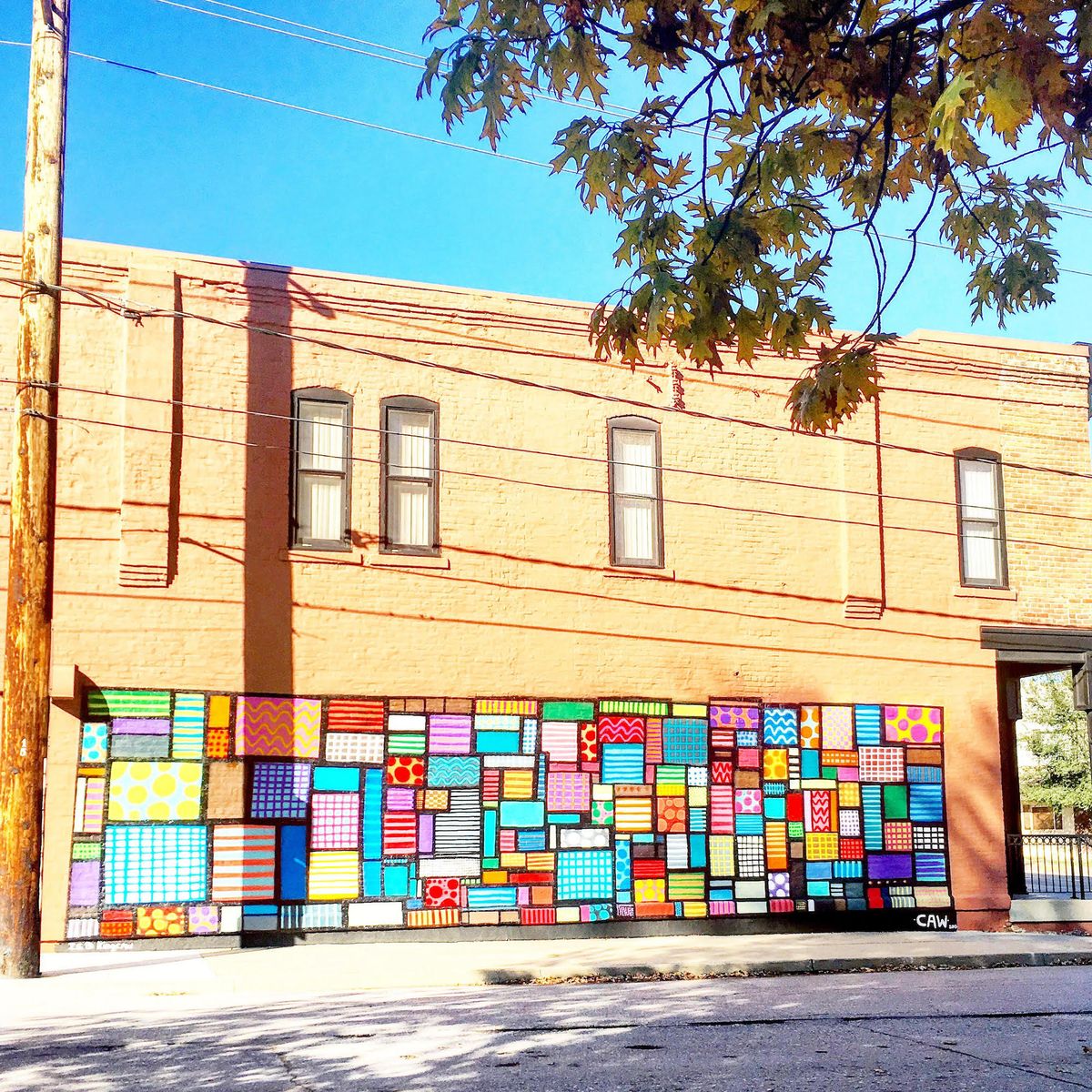Some viewers might have been riled that the New England Patriots won yet another Super Bowl in their 13-3 victory over the Los Angeles Rams in 2019, but Des Moines, Iowa-based artist Chris Williams, who goes by the acronym CAW, was more upset when his parents informed him that his 28ft-wide mural Maze (2018) on a building in downtown Des Moines was prominently featured in a Super Bowl ad for the Hy-Vee grocery chain.
The three minute and 46 second Super Bowl ad features a voice-over by Oprah Winfrey, lauding a “backpack program that provides food to children who may go hungry without even one meal over the weekend”. (The food children are given is from Winfrey’s O, That’s Good! brand and reflects a partnership between Winfrey and Hy-Vee.) Telling a story that extends over 10 years, viewers see a young girl who is a recipient of the free food carrying her backpack from school to home, passing by Williams’s mural on two separate occasions, the first time when she is in elementary school and the second time as a high schooler when she donates an apple from her bag to a homeless man in front of the mural. In all, the mural is featured for 16 seconds.
On 3 February, Williams brought a lawsuit against Hy-Vee and 10 unnamed defendants, claiming both copyright infringement for the unlicensed use of his artistic imagery and violation of his rights under the 1990 Visual Artists Rights Act (VARA), as the commercial eliminated his signature from the image and did not otherwise credit him as the artist of the mural (among its other protections, VARA ensures an artist’s attribution for his or her work).
It is not clear yet whom the other defendants may be, since there has been no determination regarding who knew the commercial violated Williams’ copyright and VARA rights—potentially a marketing company, an advertising agency and others including Winfrey herself. “I know Winfrey didn’t harbor any malevolent intentions when she talked about having dreams, and the irony is that she was using the work of a local artist to drive home that point,” says Williams.
Williams is refiling his lawsuit, which he had first initiated in 2019, with a different lawyer. In the newest filing, New York-based Leila Amineddoleh, the lead counsel, and Des Moines-based lawyer Jeffrey L. Goodman claimed that Hy-Vee showed “negligence in acquiring Mr. Williams’s consent for the use of his copyrighted material” and that the artist “was deprived of his legal right to demand a licensing fee for the commercial use of his work”. The suit asks for both statutory ($150,000 per instance of infringement) and punitive damages that would be “sufficient to deter such conduct”.
The mural, which was commissioned as part of a neighbourhood revitalisation effort, resembles a patchwork quilt.
The unauthorised use of artists’ work in advertising has given rise to numerous lawsuits in recent years by those artists against clothing manufacturers (including American Eagle, DKNY and Roberto Cavalli), carmakers (including Cadillac, Honda and Mercedes Benz) and other companies (among them Apple and Starbucks), almost all of which were settled out of court or dropped. The cost of pursuing a copyright infringement case can reach hundreds of thousands of dollars, which is well beyond the means of most artists. The paucity of judicial rulings has been seen by numerous lawyers in this field as failing to provide guidance to marketers and manufacturers as to what is and is not allowable when making use of public art.
In 2018, British artist Anish Kapoor reached an out-of-court settlement with the National Rifle Association after it included a brief image of his 2006 sculpture Cloud Gate, which is in downtown Chicago, in a television advertisement that criticised gun control measures. The result was that the image of Cloud Gate was removed from further airings of the ad.


